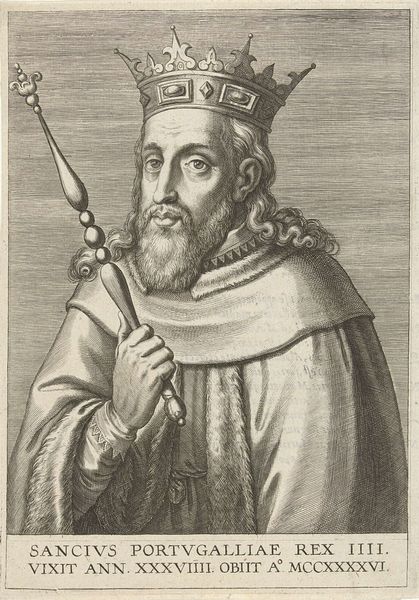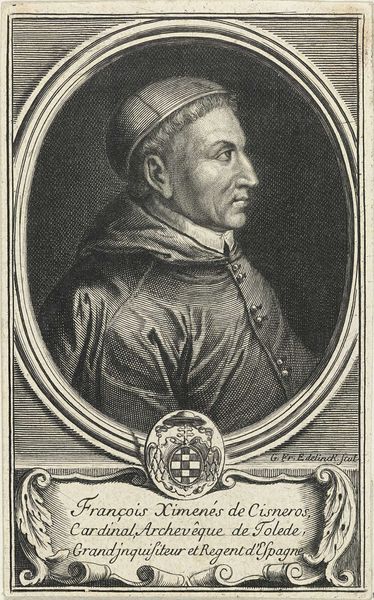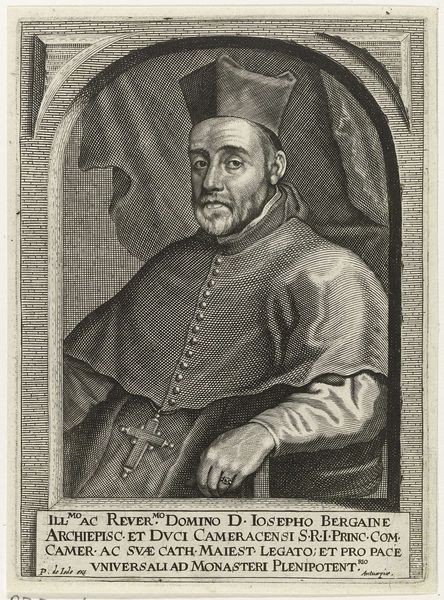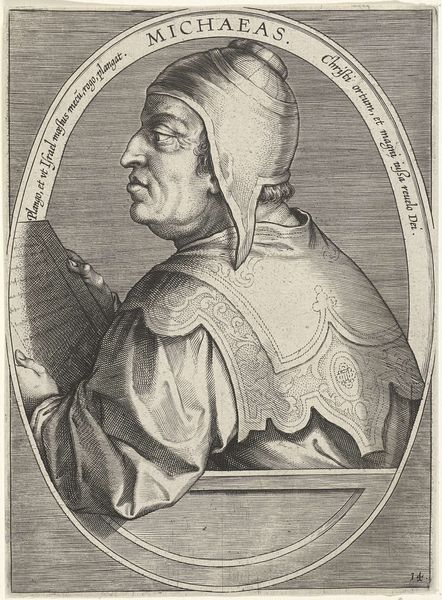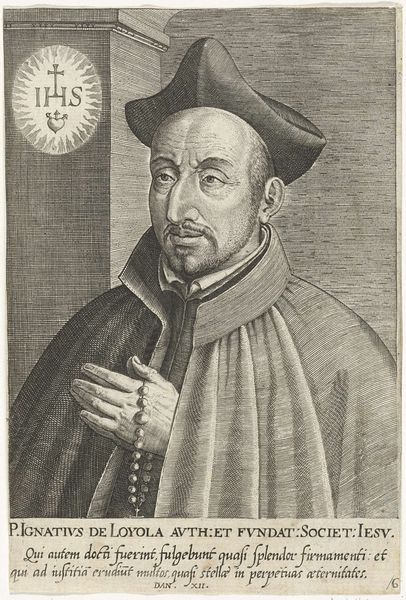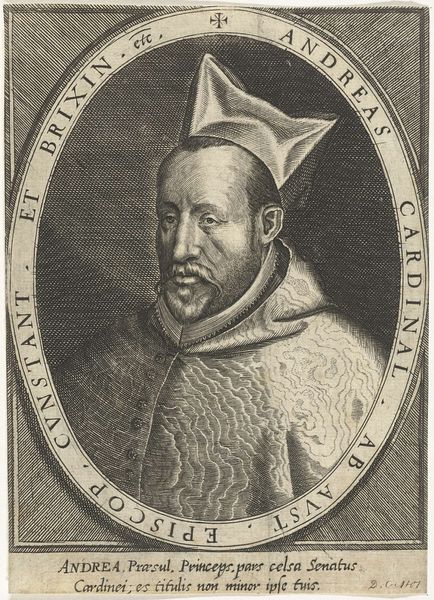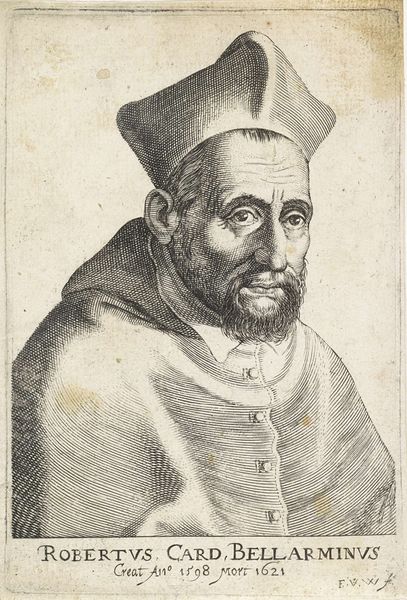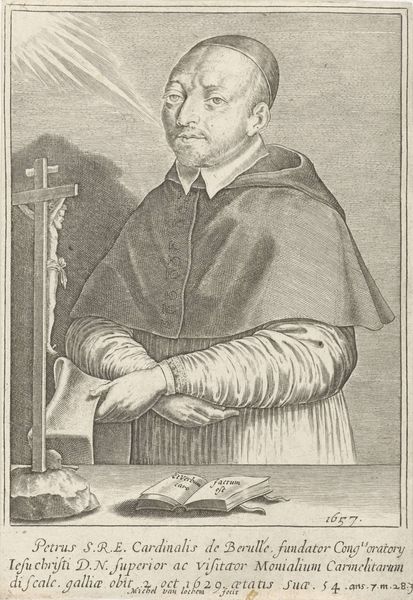
print, engraving
#
portrait
#
baroque
# print
#
old engraving style
#
history-painting
#
engraving
Dimensions: height 190 mm, width 132 mm
Copyright: Rijks Museum: Open Domain
Curator: This engraving, held here at the Rijksmuseum, presents a portrait of King-Cardinal Henry I of Portugal. Created sometime after 1621 by Cornelis Galle I, it captures a pivotal figure from Portuguese history. Editor: There’s something profoundly melancholy about this image. The tight lines of the engraving almost seem to etch worry onto his face, despite the clear symbols of power. Curator: Well, his reign was certainly…complicated. He was a cardinal, thrust onto the throne after the death of his grandnephew and a succession crisis. His religious position prevented him from marrying and producing an heir. This print, functioning as a piece of historical record, exists within the political landscape. Imagery and power were inextricably intertwined. Editor: Absolutely. And it's impossible to separate the portrait from that socio-political drama. Look at how the crown sits—almost too heavy for his head, mirroring the weight of the throne. His face isn't idealized; it hints at the difficult decisions he would’ve faced as ruler and a high-ranking religious figure. It asks us to consider, also, his queer identity. He lived as a man committed to the Church, but we should not discard these additional interpretations. Curator: Indeed, we must always examine through an intersectional lens when interpreting historical works like this, especially a print that's essentially political propaganda. Editor: I think that studying it under the umbrella of the baroque movement adds more interesting layers. The minute detail with which the cloak and crown are illustrated are evidence of the aesthetic that dominated the seventeenth century. It’s so interesting how the details simultaneously represent power and mortality, both defining aspects of the period. Curator: Galle’s skills are certainly highlighted in the meticulous patterns on Henry's robes, demonstrating the engraving capabilities of the era. This detail, along with its wider dissemination, cemented the King-Cardinal’s public image within the prevailing visual vocabulary. Editor: Considering Henry's legacy within this intricate web of power, religion, and personal identity really opens a space for understanding the complex negotiations present in every portrait and especially historical representations of marginalized individuals. Curator: Precisely, studying art like this offers critical lenses for questioning inherited histories and their impact. Editor: Ultimately, it encourages engagement with art's vital, ongoing role within today's world.
Comments
No comments
Be the first to comment and join the conversation on the ultimate creative platform.


